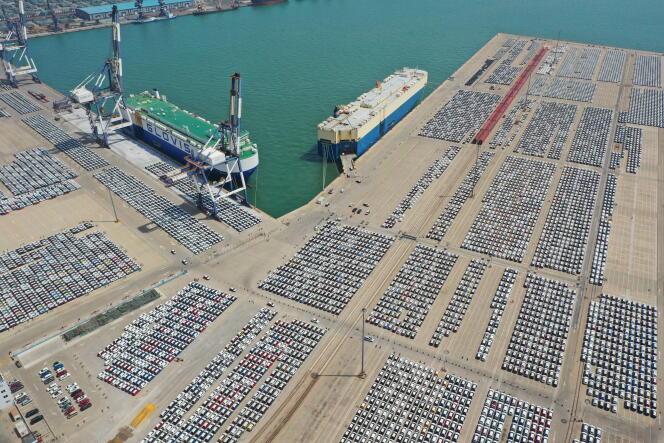


Beijing's response was swift. The day after European Commission President Ursula von der Leyen announced an investigation into Chinese state subsidies for electric vehicles, China took exception.
"It is a naked protectionist act that will seriously disrupt and distort the global automotive industry and supply chain, including the European Union [EU], and will have a negative impact on China-EU economic and trade relations," China's Ministry of Commerce said on September 14.
The investigation announced by Brussels is a response to China's extraordinary rise to power in the automotive industry. A few figures suffice to illustrate the point. In 2021, the country imported twice as many vehicles as it exported, in value terms. In the first half of 2023, the Chinese industry overtook Japan to become the world leader, exporting $35 billion (€32.76 billion) worth of vehicles, compared with $21 billion worth of imports. Global consulting firm AlixPartners has estimated China's subsidies for electric cars at $57 billion in the form of tax breaks or vehicle purchase subsidies.
Wielding the carrot and the stick, China has been pushing investment in the sector since 2009. At a time when the technology was not yet ready to conquer the general public, local authorities were encouraged to equip their cab and bus fleets with electric vehicles, thanks to central government subsidies of up to 60,000 yuan (€7,700) per car and 100,000 yuan per bus. BYD, now China's number one manufacturer, was the big winner in this strategy.
Later, in 2015, China supported the battery sector by requiring automakers to use Chinese batteries in order to benefit from purchase subsidies. This move promoted local heavyweights such as BYD and above all CATL, which dethroned Korea's Panasonic in 2020 to become world leader in the sector. Moreover, to encourage people to choose electric cars over combustion engine vehicles, some cities set up a further incentive scheme.
In 2016, Shanghai introduced green license plates for electric vehicles, which exempted them from the road space rationing regulations applied to thermal vehicles. The following year, other cities followed suit. "According to our research in cities that have taken these measures, sales of electric vehicles have increased three to fivefold compared with the rest of China," said Stephen Dyer, automotive specialist and AlixPartners director.
After subsidies (the carrot), China also knows how to use restraint (the stick). In 2019, the country imposed quotas on the proportion of electric vehicles in total production for both Chinese and foreign automakers. Manufacturers that exceeded the quotas were rewarded, while those who fell short were fined. It was a way of transferring the cost of government subsidies to the manufacturers themselves.
You have 48.4% of this article left to read. The rest is for subscribers only.
